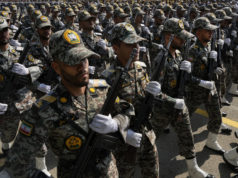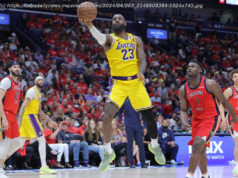TAMPA, Fla. — Pitch after pitch sizzled in, popping like gunfire as they blasted into catcher Jorge Saez’s glove. On a muggy Sunday last month,…
TAMPA, Fla. — Pitch after pitch sizzled in, popping like gunfire as they blasted into catcher Jorge Saez’s glove.
On a muggy Sunday last month, the day before position players were due to report to the Yankees’ spring-training facility, veteran left-hander Rex Brothers worked from one of six mounds under a corrugated steel roof adjacent to the right-field bullpen at Steinbrenner Field. Like many professional pitchers these days, Brothers can hurl baseballs at speeds rare in the game as recently as a decade ago. He made only 12 pitches in his lone big-league outing of 2018 and did not retire a single batter, but 11 of those pitches registered between 96 and 98 mph.
In the early phase of his spring-training bid for a bullpen spot, Brothers threw to Saez, a 28-year-old former 32nd-round draft pick who has not yet played above Class AA ball. And though it was still more than a month before teams would be ready for regular-season action, the velocity on Brothers’ fastballs appeared impossible.
Saez simply caught them and tossed them back. All down the row, the other catchers in Yankees camp did the same for other pitchers. Their abilities behind the plate are obvious, practiced, rarified, and, for the length of spring training, uncompensated.
“I’ll get paid in the season,” said Saez, who re-upped with the Yankees on a minor-league deal this winter and is about to enter his eighth year in pro ball.
Saez is one of seven catchers with the big-league Yankees this spring. The Yankees will not use seven catchers in the Major Leagues this season unless something goes terribly awry. They used three catchers in the bigs in 2018, all of whom are back for this year. Of the 30 MLB teams, only the Minnesota Twins used seven catchers at the Major League level last year — and only because one got hurt, two got traded, and one was Joe Mauer catching a single pitch in the final game of his career.
The Yankees have 22 pitchers on their 40-man roster and 11 more in camp on non-roster invites. They used 26 different pitchers in 2018, and only four clubs in the Majors used fewer. Most teams used 30 or more.
Pitchers and catchers arrive to Major League camps before position players because the pitchers need extra time to get ready for the season and because without catchers, to paraphrase Casey Stengel, there would be a lot of passed balls. Teams bring so many extra pitchers to camp because they’re likely going to need them. Teams bring so many extra catchers to camp because someone’s going to need to catch those pitchers.
Like all players in camp, the catchers will earn no more than per diem stipends during the month and a half they spend in mandatory preparation for the regular season. Baseball players do not get paid for spring training.
And it’s players in Saez’s situation — catchers participating in big-league camp by non-roster invitation — who best expose the preposterous claim Major League Baseball actively works to validate in legislation: Spring training, the league would have you believe, does not constitute work.
MORNING WIN NEWSLETTER: Irreverent and incisive recap of sports news
SPORTS, DELIVERED: Get latest news right in your inbox!
WANT MORE MLB DRAMA? Make this change to season format
MLB WIN TOTALS: How we see season unfolding
Baseball players have never been paid for spring training. And that they should endure it unsalaried is more than just a relic of Major League Baseball’s ages-old structure. It is a reality the sport strives to maintain.
For guys assured of big-league jobs and the guarantee of at least the $555,000 Major League minimum salary during the season, it’s more of a technicality than a hardship. But not every player in Grapefruit and Cactus League clubhouses can count on April windfalls. Minor league players earn salaries that amount to less than minimum wage for up to seven years on their first pro contracts, and the rigorous spring-training schedule doesn’t exactly allow time for moonlighting.
After a lobbying effort by MLB, last year’s $1.3 trillion congressional spending bill — signed into law by President Donald Trump in March — included an amendment to the Fair Labor Standards Act to exempt minor-league baseball players from federal minimum-wage protection. The so-called Save America’s Pastime Act, originally introduced in 2016 by a pair of congresspersons who received campaign donations from MLB’s PAC, appeared on page 1,967 of the 2,232 omnibus 2018 spending bill.
This winter, the league endorsed a bill in the Arizona House of Representatives to extend the federal exemption into state law in Arizona, the spring-training home for half of Major League teams. Representative T. J. Shope, who sponsored the bill, told the Arizona Capitol Times in January that spring training is “essentially a tryout,” even though all players training in every camp are already under contract with their organizations.
Shope told For The Win by email that the Arizona bill did not pass and “was probably dead before it began.” It didn’t get out of committee, meaning it never reached the statehouse floor for a vote.
That dead bill, like the inclusion of the Save America’s Pastime Act in the 2018 budget, undoubtedly reflects Major League Baseball’s efforts to combat a lawsuit first filed in 2014. Spearheaded by St. Louis-based attorney and former minor-league pitcher Garrett Broshuis, the suit seeks to apply federal minimum-wage laws to the salaries of minor leaguers. Pro players in low minor-league levels make as little as $1100 a month, only get paid during the regular season, and do not receive overtime compensation.
“MLB has signed these players up to seven-season employment contracts,” Broshuis said by phone this week. “They’re enjoying the benefits of controlling these players for seven years. On the contract, it calls them employees. They have a responsibility to treat them as normal employees should be treated. They can’t enjoy the benefits of it and not be required to meet the responsibilities that come with it.
“When the employer requires you to work, you should be paid for it. This isn’t the late 1800s. We’re in the 21st century, and MLB needs to update its labor policy just like every other company in the country has done. A lot of times these players are working 31 or 32 straight days during spring training, and a lot of times it’s 10 hours a day.”
MLB did not respond to a request for comment for this article. After first announcing its support for the Save America’s Pastime Act in June of 2016, Major League Baseball released a statement that argued, “Being a Minor League Baseball player is not a career but a short-term seasonal apprenticeship.” The “season” in question lasts six months, the first of which — spring training — is unpaid.
Since 2017, Broshuis has been awaiting a ruling on class status from the United States Court of Appeals for the Ninth Circuit before his case can proceed.
By the standards of minor league catchers in spring training, guys like Saez are the lucky ones.
MLB organizations split players into Major League and minor league camps. According to the sport’s collective bargaining agreement, only non-roster players with enough service time to be eligible for salary arbitration — “Super Two” players and above — receive the weekly expense allowances extended to rostered big-leaguers in spring training, but all players in Major League uniform for Cactus or Grapefruit League games get $95.






